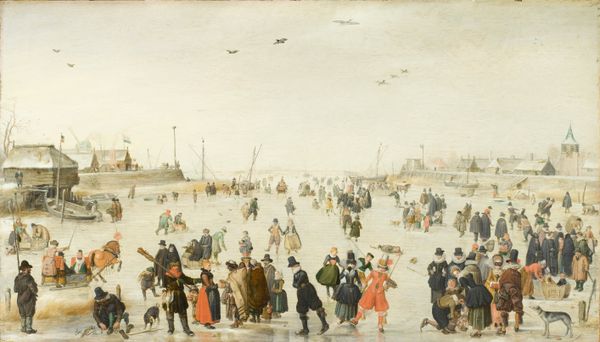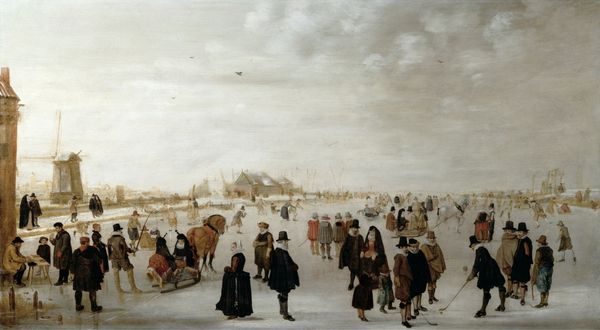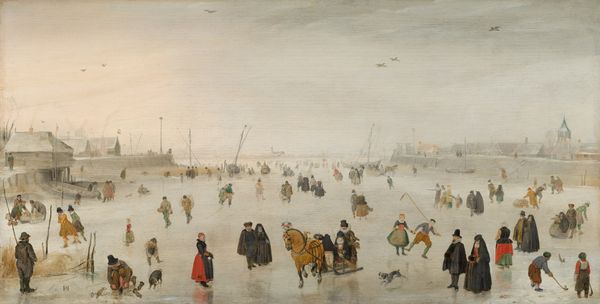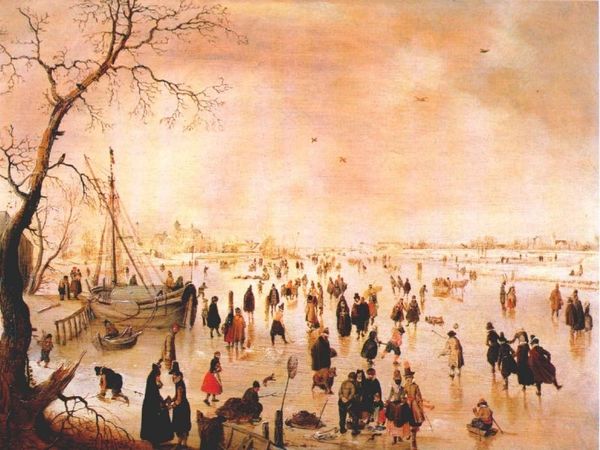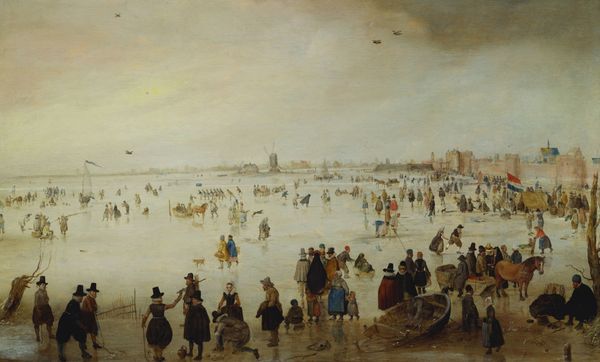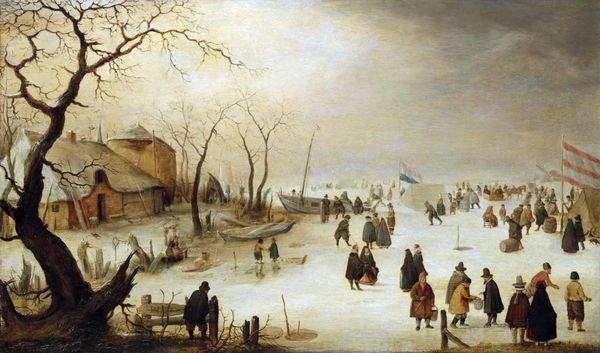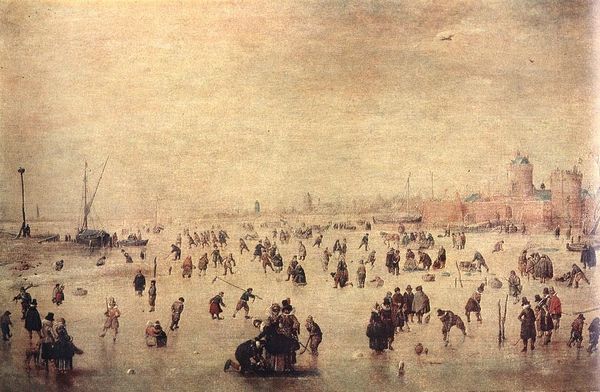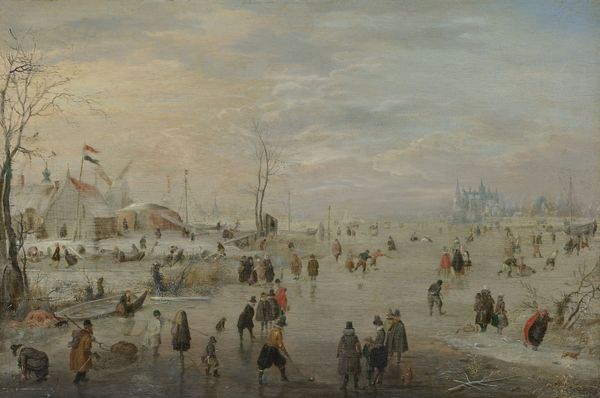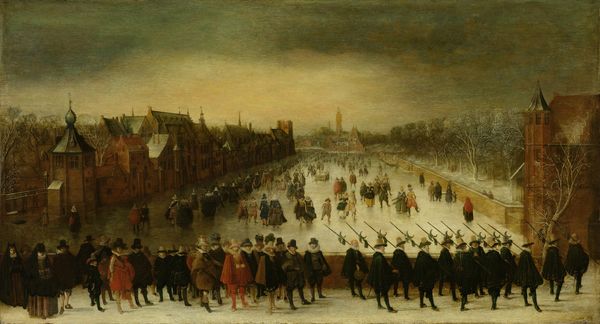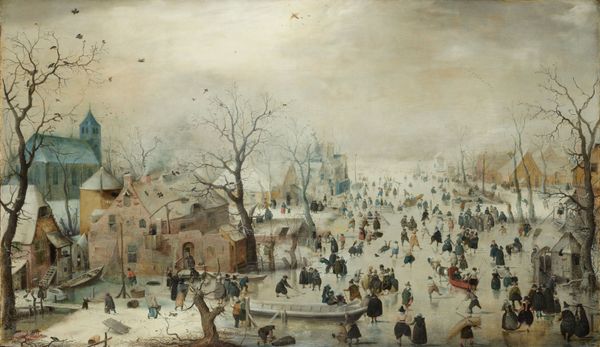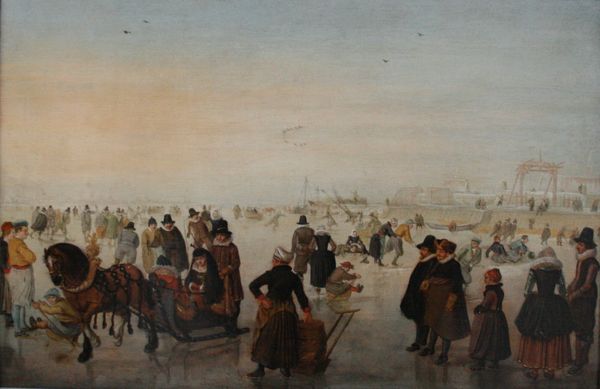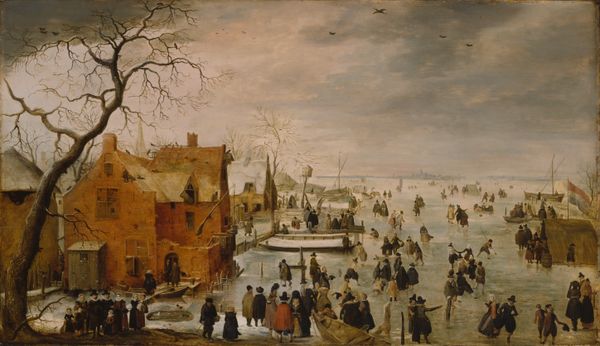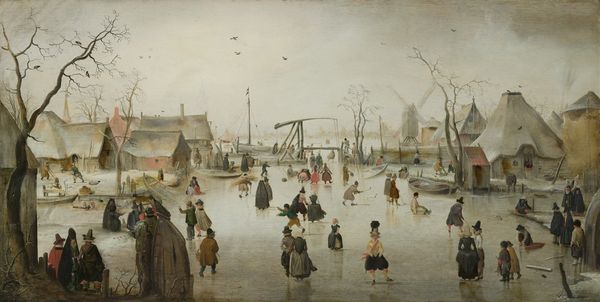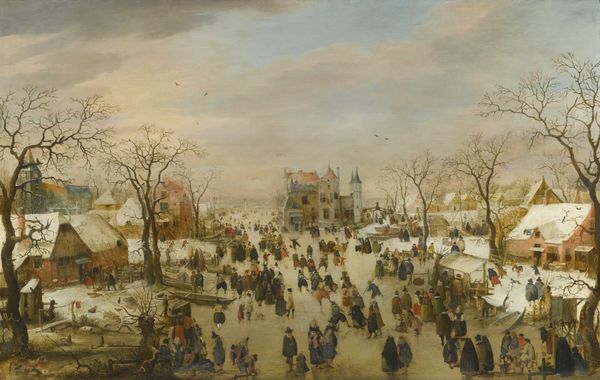
oil-paint
#
baroque
#
dutch-golden-age
#
oil-paint
#
landscape
#
oil painting
#
cityscape
#
genre-painting
#
realism
Dimensions: 64 x 38 cm
Copyright: Public domain
Editor: Hendrick Avercamp's "Winter Landscape with a Frozen River and Figures," painted around 1620 with oils, showcases a vibrant Dutch scene. My first thought: It feels so full of life, like a historical snapshot come alive, yet somehow touched by melancholy with its muted palette. Curator: Melancholy indeed. Observe how Avercamp carefully builds the scene using layers of translucent glazes of oil-paint to represent the textures of ice and clothing, giving texture and weight. Editor: Speaking of the figures, they all seem to tell a little story, each posture hinting at different societal roles. What symbols do you detect embedded within their actions? Curator: The sheer volume of figures implies community, industriousness but it also hints at class distinctions through the finery of some clothes and roughspun garments of others, marking each individual's relationship to labor and capital. Editor: Interesting point. Consider, too, the recurring image of skaters - the constant motion, that rhythmic gliding... it reflects both freedom and the precarious nature of life in the 17th century. Were these types of landscape paintings commonplace at the time? Curator: Increasingly so. Avercamp made a living by representing these scenes, adapting to growing mercantile needs by rendering both land and water as sources of sustenance, transport, and commercial possibilities. That's the context out of which his oeuvre develops. Editor: So, it is possible he repeated certain motifs to meet demand. You mentioned community, and I noticed that despite the numerous figures there is a conspicuous absence of direct interaction between groups, an insular characteristic reinforced by landscape itself, with no clear sightlines connecting each group. Curator: That might be true, although it depends. But if we are to draw further interpretations, it’s equally possible those groupings might reinforce Avercamp's dedication to an individualized experience of public life by those portrayed in oil paint on linen. Editor: I hadn't considered that point, excellent! Avercamp captured something universal about our relationship to both landscape and leisure. I wonder what contemporary viewers made of all the subtle social cues in this frozen landscape! Curator: Regardless, this was how one Dutch master balanced materials, labor, composition, and theme in 1620—and those elements, considered as a whole, still offer so much to contemplate now.
Comments
No comments
Be the first to comment and join the conversation on the ultimate creative platform.
